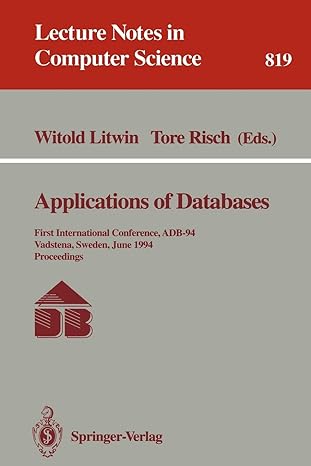Question
1. convert the following decimal fractions to binary with a max of six places to the right of the binary point. A. 80.90625 B. 84.874023
1. convert the following decimal fractions to binary with a max of six places to the right of the binary point.
A. 80.90625 B. 84.874023
2. Perform the following binary multiplications, assuming unsigned integers:
B. 10011 x 011 _________ C. 11010 x 1011 _______
3. Perform the following binary divisions, assuming unsigned integers:
B. 10000001 / 101
C. 1001010010 / 1011
4. Assume we are using the simple model for floating-point representation as given in the text (the representation uses a 14-bit format, 5 bits for the exponent with a bias of 16, a normalized mantissa of 8 bits, and single sign bit for the number ):
Show how the computer would represent the numbers 100.0 and 0.25 using this flouting-point format. Show how the computer would add the two floating-point numbers in part a by changing one of the one of the numbers so they both expressed using the same power of 2. Show how the computer would represent the sum in part b using the given floating-point representation. What decimal value for the sum is the computer actually storing? Explain
5. A. Given that ASCII code for A is 1000001, what is ASCII for J? B. Given that the EBCDIC code for A is 1100 0001, what is the EBCDIC code for J?
6. Using the CRC polynomial 1101, compute the CRC code word for the information word, 01001101. Check the division performed at the receiver
Step by Step Solution
There are 3 Steps involved in it
Step: 1

Get Instant Access to Expert-Tailored Solutions
See step-by-step solutions with expert insights and AI powered tools for academic success
Step: 2

Step: 3

Ace Your Homework with AI
Get the answers you need in no time with our AI-driven, step-by-step assistance
Get Started


